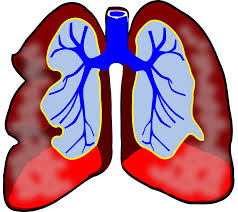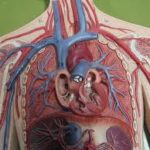The Lungs: Basics we ought to know.
The lungs are among the most complex structures of the body. They form the important organ of the respiratory system. Though we expose them to smog, dust, industrial fumes, even cramp them with poor posture, they nevertheless carry on their task trouble-free.
All that the lungs need to carry on respiration activity is hot, moist and dirt-free air. If the smoke and dust that we breathe in reach the lungs, they get clogged in few hours. Nature has provided the human body with many internal defense mechanisms that guard the lungs too. It all starts with the nose. Hairs in the lining of the nose pushes out the dust particles in the air we breathe in. The passage way also serves to warm the air that is taken in. Warming task continues in deeper nasal passage. Here the bones are covered by tissues with a good supply of blood. When air passes through these tissues, it gets warm. During cold weather, the blood vessels become wider to produce more heat.
During the process of warming of air, glands leak fluid into the nasal passages. This makes the air humid. When we cry, tears spill over the nasal passages through tear ducts. An enzyme by name lysozyme which is a powerful destroyer of bacteria turns up in tears, saliva and mucus secretions. Glands in the nose that secrete mucus also helps trap the dust particles entering the nose.
Now we understand how inhaled air is made warm, moist and dirt/bacteria free. But how do the dust particles trapped inside come out? There are microscopic hairs called cilia along the whole path through which the air travels. They wave around wildly back and forth about twelve times a second. Moving faster in one direction, they sweep up the debris upward towards the throat. It gets swallowed and doesn’t harm the stomach and finds its way outside easily.
Breathing is a very complex process. The lungs hang loosely in the chest, each in a separate compartment. Each lung has its own duct from the windpipe. The branches are called bronchial tubes whose job is to deliver air to the functioning part of the lung called alveolus. Alveoli are tiny microscopic air sacs and they are about 300-500 million alveoli in the lungs.
Each alveolus has a cobwebby covering of capillaries which are the smallest of blood vessels. Through the thin walls of these micro vessels (capillaries), the blood gives up carbon dioxide and takes in oxygen. The body’s entire blood supply passes through these capillaries every few minutes. Normally we take about 20 breathes a minute utilizing only about one-eighth of our lung capacity. When we rest, only one sixth of the air we inhale is changed at a time. During violent exercise, the cells crave for oxygen. So deeper and more rapid breathing can bring into lungs ten or more times the oxygen supplied during resting.
What are horsetails and their features?
Why is iron important for body? What is heme iron?









